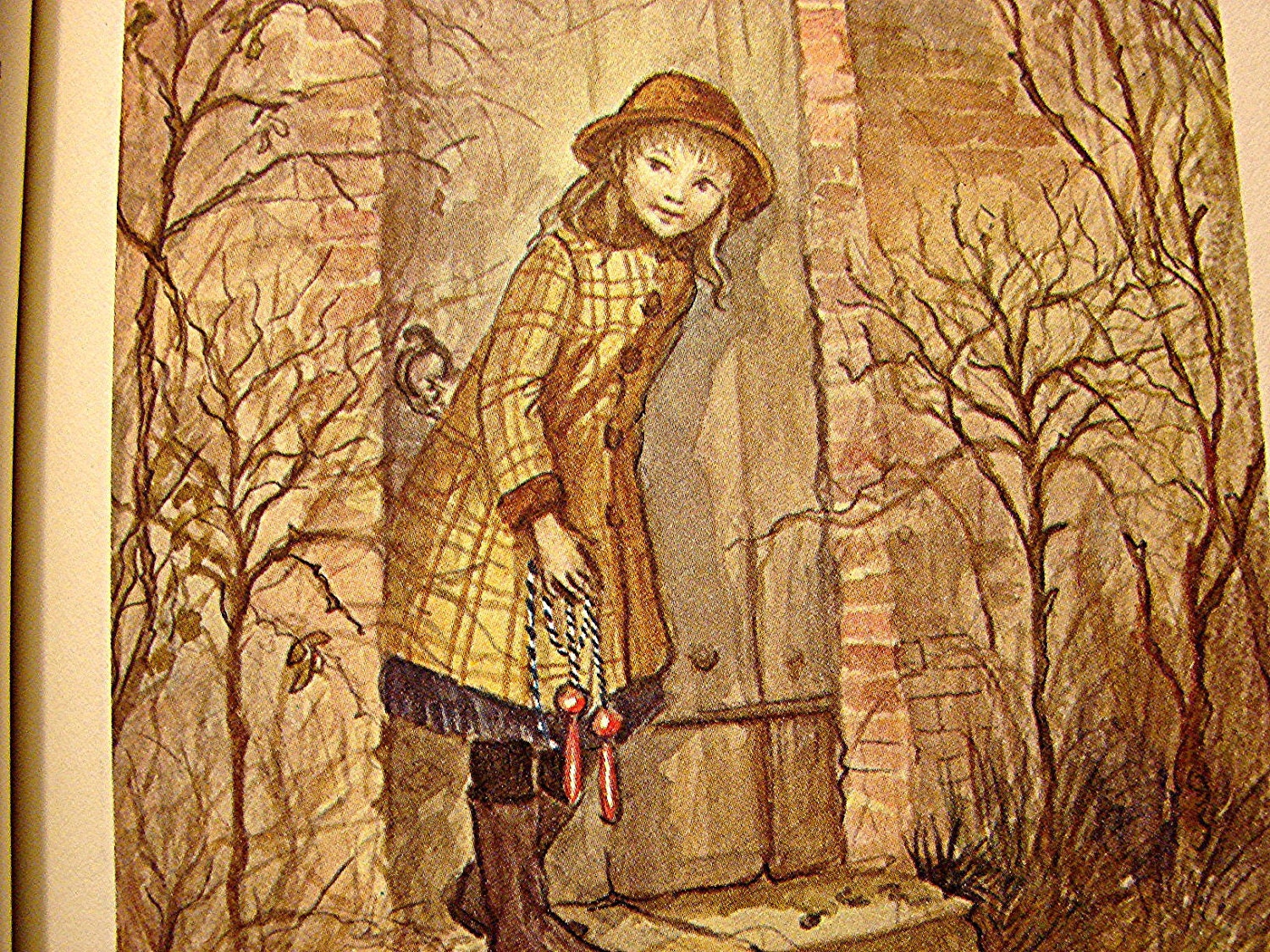“I’ve often thought,” said Sara, in her reflecting voice, “that I should like to be a princess; I wonder what it feels like. I believe I will begin pretending I am one.”
~ A Little Princess by Frances Hodgson Burnett,
Chapter V. Becky
If it seems that the children’s novels I’ve been
recommending have a similar tone—that of overactive imaginations, spunky orphan
girls, etc.—I assure you that this pattern has only just now occurred to me as
I’ve been making them. The truth is
these are the classic children’s novels I loved as a girl, and if I loved
them—before all my English Literature courses in college or reading all the
documentations on how to classify and analyze and critique literature, back
when I enjoyed it with a naïve enthusiasm that children tend to have for
stories—then I’m sure other people will love them.
Maybe these books have been recommended to death. Maybe what I say about them is nothing new
under the sun. Oh well. Nowadays for every plug for A Little
Princess there’s five reviews of Diary of a Wimpy Kid. It’s all well and good for new books to be
brought to readers’ attention. But it’s
also good to remind them of the “golden oldies,” as it were. And that’s what I’m going to do today.
My mom read the two famous tales The Secret Garden and A Little Princess by Frances Hodgson Burnett. I could have read them myself—and I probably did, about a dozen times, when I was a girl—but she could do the voices, which is always an important consideration. On the surface the two novels are similar. Both are about an orphan girl living in an environment that is contrary to their nature. Both stories are connected to the British Raj. Both involve magic, and, without resorting to fairy godmothers or genie lamps, magical things happen.
This is where the stories differ: the two main heroines are polar
opposites. Mary Lenox is the paragon of
brats, raised in India where her parents die and she barely cares because her
parents never cared for her. She is sent
to her uncle’s in Yorkshire where she makes a total pain out of herself for a
while until the brisk Northern air gets her healthy and she makes friends,
deals with her even brattier cousin Colin, and gets into the hobby of
gardening.

(Yes. The most secretest garden ever
where you can totally see the door on the inside even though on the outside it
is INVISIBLE.)
If Mary is the paragon of brats when her story begins,
Sara Crewe is unrelentingly perfect. The
daughter of a rich soldier stationed in India, she is enrolled in a
boarding-school for girls and given anything money could buy…until her father
dies, his fortune disappears, and the villainous schoolmistress decides to take
the opportunity to vent her jealousies on the poor orphan. Sara is mature beyond her years despite her
love of make-believe, and even when she is stricken with poverty and trials
beyond what a normal child would endure she behaves as a princess, quietly supporting
and leading her band of loyal friends.
Her perfection can get kind of annoying at times, to be honest.
Both of these books influenced me greatly as a
child. I tried to get healthy lungs by
going out and playing in the rude, windy air of the autumn. (And all I got was strep. Guess you have to actually be in Yorkshire to
have that health-cure work.) Whenever I
found even a penny on the road I was reminded of the time a starving Sara finds
money in the gutter, buys hot cross buns, and then gives them away to someone
even more unfortunate than herself.
RECOMMENDED READING AGE: Any age, unless a child is
sensitive to the suffering of fictional characters and would be upset in
particular by Sara’s darkest hours.
PARENTAL NOTES: None. Mary may be a bad example, but she’s presented as a singularly unpleasant
person at first and I doubt any child would use her as a role model.
AVAILABILITY: There’s a collection of all three of Burnett’s
famous children’s books (including Little Lord Fauntleroy). If you’re interested in getting
individual volumes of each book, luckily there is a wide array of hardcover copies,
from CRW Publishing’s cute “Collector’s Library” editions to Sterling Classics
and Barnes and Noble Leatherbound. The
best illustrator of both books is Tasha Tudor, who did watercolors for both A Little Princess
and The Secret Garden.
ADAPTATIONS: Most adaptations of A Little Princess make some
changes—having her father be secretly alive but with amnesia, and often playing
up the Indian element in how Sara believes in magic—but for the most part keep
true to the story. There is an
adaptation starring Shirley Temple, a British miniseries from 1986 and a 1995 Warner Bros. production.
The most recent adaptation of The Secret Garden is
from 1993
and although I’m sure I’ve seen it, I can’t for the life of me remember a thing
about it. I’ll have to borrow it for the
library and refresh my memory!


No comments:
Post a Comment